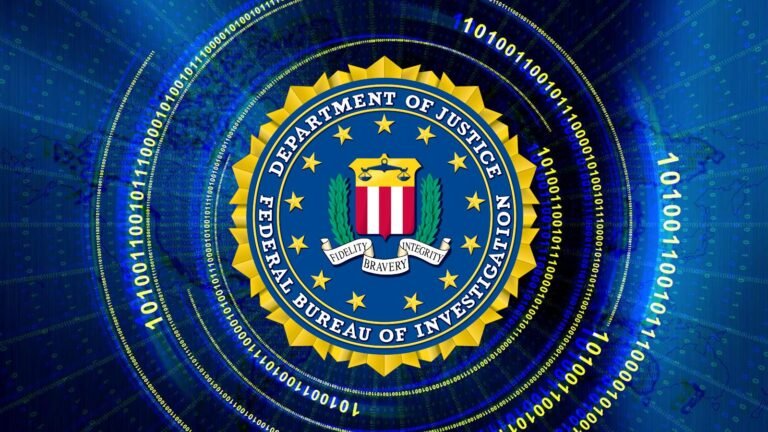Fast Facts
-
Significant Breach Growth: The Play ransomware gang has breached approximately 900 organizations as of May 2025, tripling reported victims since October 2023, impacting businesses across multiple continents.
-
Advanced Tactics: The gang employs recompiled malware, complicating detection efforts, and pressures victims through direct threats via phone calls to release stolen data unless ransom is paid.
-
Exploitation of Vulnerabilities: Initial access brokers affiliated with Play are exploiting vulnerabilities in remote monitoring tools, paving the way for potential future ransomware attacks.
- Preventative Measures Recommended: Security agencies urge organizations to keep systems updated, implement multi-factor authentication (MFA), maintain offline backups, and develop recovery protocols to defend against Play ransomware attacks.
The Issue
As of May 2025, the FBI, in conjunction with CISA and the Australian Cyber Security Centre, has reported a significant escalation in cyber threats posed by the Play ransomware gang, which has compromised approximately 900 organizations—a threefold increase since October 2023. Active since June 2022, this group, notorious for its strategic exploitation of vulnerabilities in critical infrastructures and businesses across North America, South America, and Europe, has employed sophisticated techniques, such as recompiled malware and targeted threats against victims. This includes leveraging initial access brokers who exploit specific vulnerabilities in remote management tools, effectively paving the way for future ransomware deployments.
Reporting on these developments, the FBI highlighted the gang’s unique modus operandi, which involves not only encrypting data but also stealing sensitive documents to pressure victims—threatening to leak this data on the dark web if ransom demands are not met. High-profile targets have ranged from cloud computing giants to municipal governments and notable corporations. In response to this evolving threat landscape, cybersecurity experts are advised to adopt rigorous security measures, including the implementation of multifactor authentication, regular updates to system software, and the maintenance of offline data backups, thereby reinforcing defenses against these sophisticated cybercriminals.
Risk Summary
The surge in attacks by the Play ransomware gang, which has reportedly compromised around 900 organizations as of May 2025, represents a looming threat not just to individual entities but to the broader business ecosystem. The unique tactics employed by this group—leveraging recompiled malware and exploiting specific vulnerabilities—complicate detection and mitigation, thereby increasing the risk of collateral damage to other organizations that may share network environments or dependencies. Affected entities report being extorted under dire threats of data exposure, creating a climate of fear that can destabilize market confidence and operational integrity across entire sectors. As these attacks unfold, businesses with inadequate cybersecurity defenses may find themselves ensnared in a similar web of exploitation, leading to potential financial loss, reputational damage, and operational disruptions. This not only jeopardizes the immediate victims but also endangers partnerships and collaborations, as the fallout from ransomware incidents can ripple outward, impacting supply chains and customer trust across industries. Therefore, the implications of such cyber threats extend far beyond the individual organizations targeted, posing substantial risks to the interconnected fabric of modern commerce and critical infrastructure.
Possible Action Plan
The recent breach involving Play ransomware, which compromised approximately 900 entities—including vital organizations—highlights the urgency of swift remediation in cybersecurity incidents to mitigate potential fallout and restore operational integrity.
Mitigation Steps
- Immediate Isolation: Disconnect affected systems from the network to prevent further lateral movement of the ransomware.
- Data Backup Integrity: Ensure backups are uncorrupted and assess their integrity before restoration.
- Vulnerability Management: Conduct a thorough vulnerability assessment to identify and rectify system weaknesses.
- Incident Response Plan: Activate and enforce the established incident response plan to streamline remediation efforts.
- Communication Strategy: Maintain transparent communication with stakeholders to manage reputational risks and inform recovery timelines.
- Threat Intelligence: Leverage threat intelligence resources to understand current trends and prevent future incidents.
- Security Training: Enhance employee awareness and training on phishing and other attack vectors.
NIST CSF Guidance
The NIST Cybersecurity Framework emphasizes the critical nature of timely and effective response and recovery processes. Reference NIST Special Publication 800-61 for detailed guidance on incident handling and response strategies.
Explore More Security Insights
Explore career growth and education via Careers & Learning, or dive into Compliance essentials.
Explore engineering-led approaches to digital security at IEEE Cybersecurity.
Disclaimer: The information provided may not always be accurate or up to date. Please do your own research, as the cybersecurity landscape evolves rapidly. Intended for secondary references purposes only.
Cyberattacks-V1

